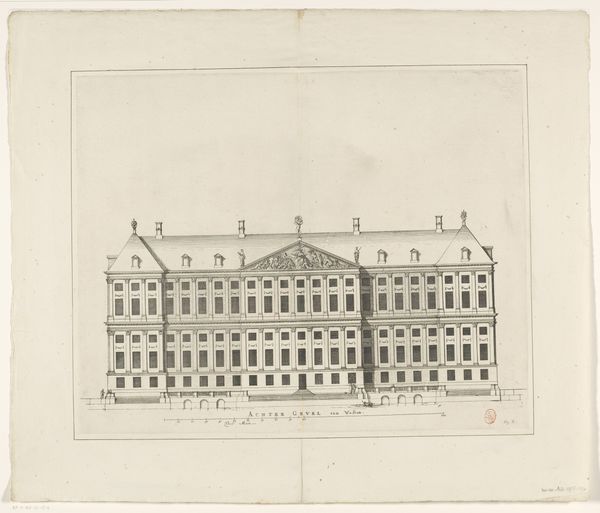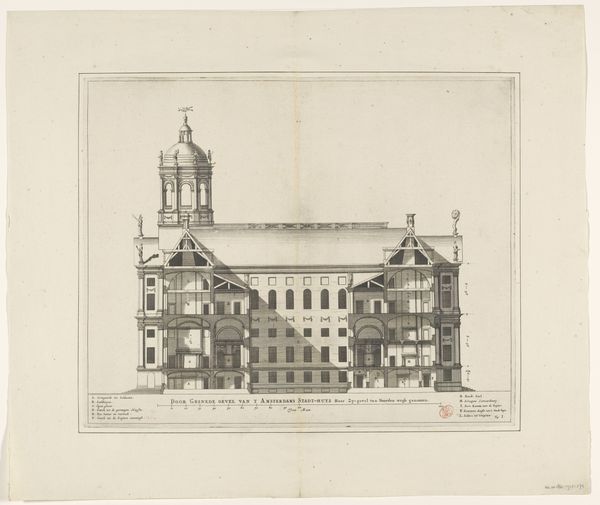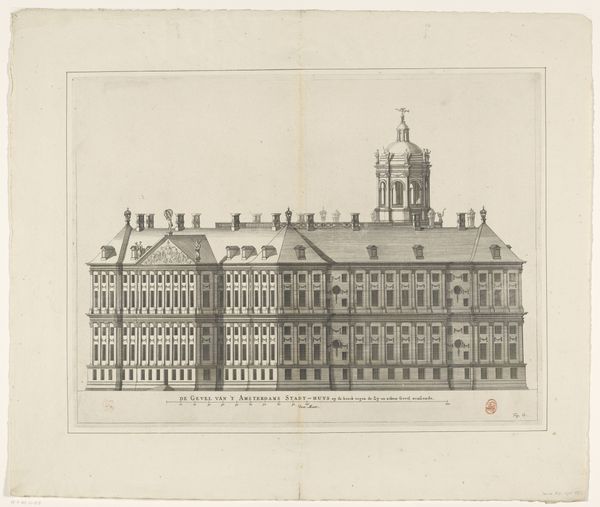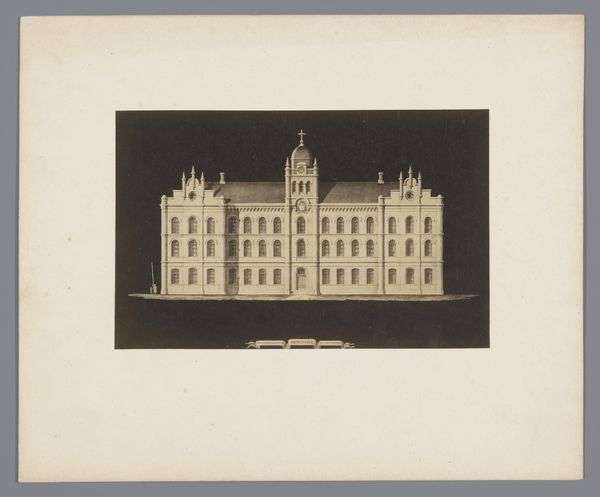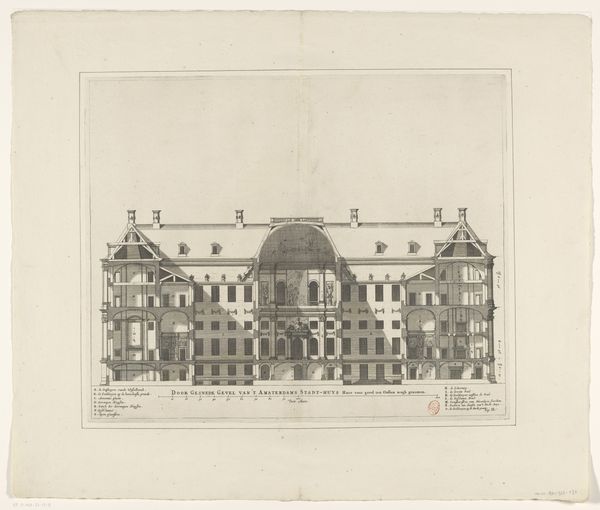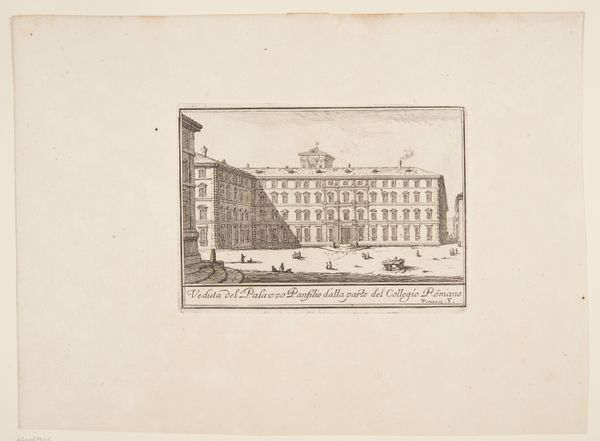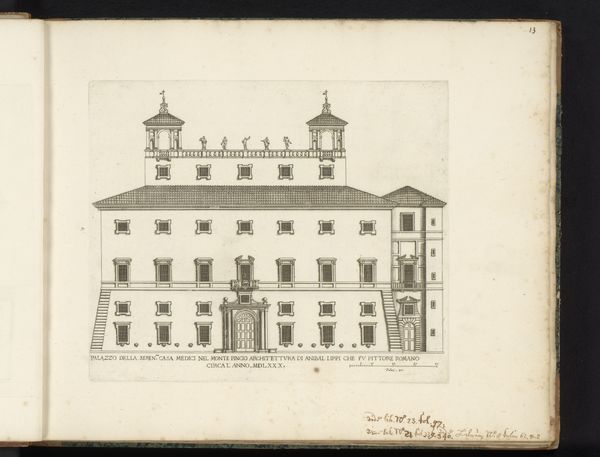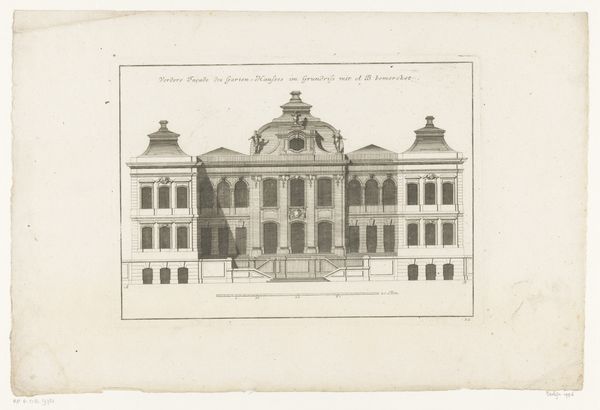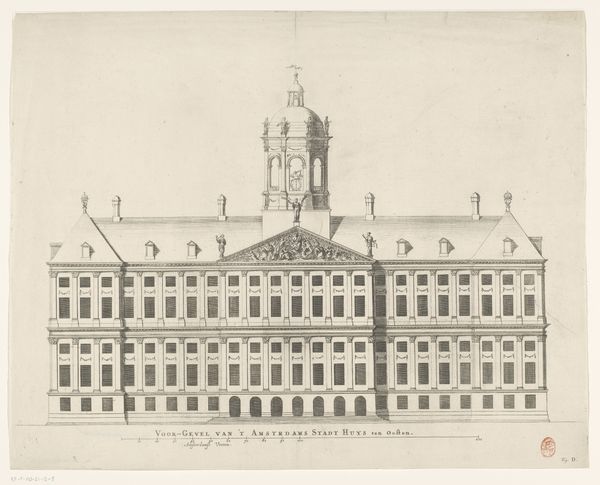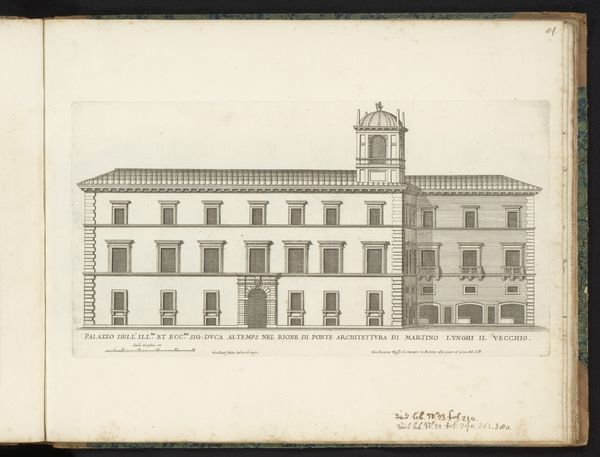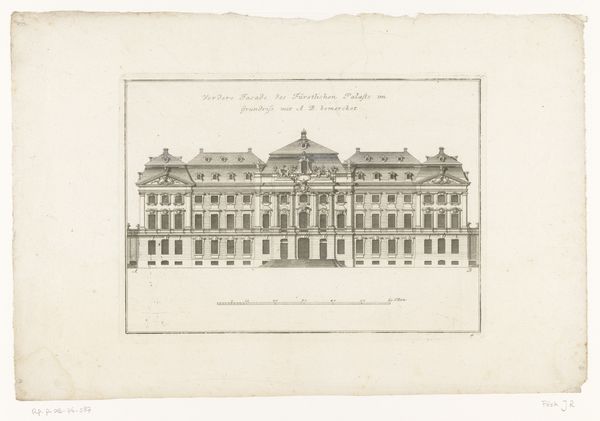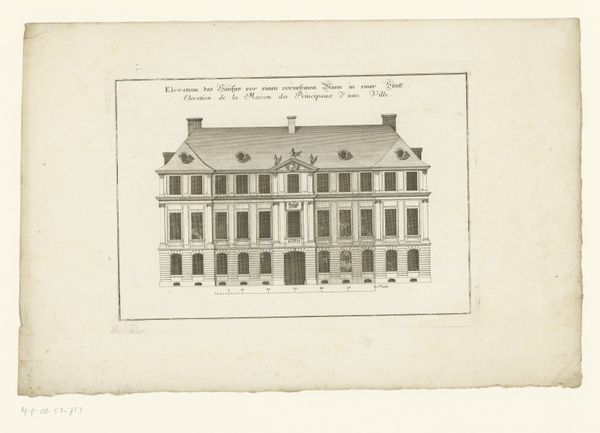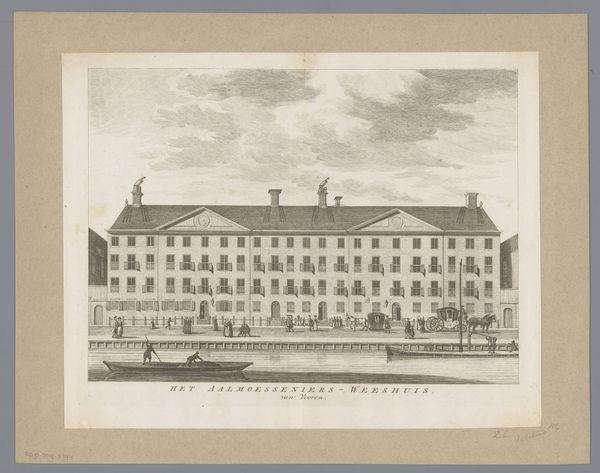
drawing, print, etching, paper, architecture
#
drawing
#
baroque
#
dutch-golden-age
# print
#
etching
#
perspective
#
paper
#
line
#
cityscape
#
architecture
#
realism
Dimensions: height 390 mm, width 504 mm
Copyright: Rijks Museum: Open Domain
Curator: This etching by Dancker Danckerts from 1661 is entitled, "Zijgevel (zuidzijde) van het Stadhuis op de Dam," or "South side of the Town Hall on the Dam". It's a wonderfully precise rendering of the building’s facade. Editor: My immediate thought is order, regimentation, an almost oppressive sense of uniformity. Rows and rows of windows… it’s monumental, yet somewhat impersonal. Curator: The symmetry certainly speaks to the values of the time, a striving for balance and rationality that we see mirrored in the architecture of the Dutch Golden Age. But those endless windows you mention also represented something quite radical. Editor: Radically… boring? I mean, from an aesthetic point of view… Curator: No, radical in their implied transparency. Think about it. Windows, clear panes of glass, allow the public to see *in*. This wasn't just a town hall; it was a statement about civic virtue and accountability. It visually embodied the republican ideals of the era. Editor: So, a visual symbol of open government, then. But beyond that initial statement, doesn’t the sheer scale itself become a symbol of power, almost regardless of intention? Look at the way the building dominates the composition. Curator: Indeed. While the image might initially suggest democratic ideals, the imposing scale reflects the burgeoning power and wealth of Amsterdam at the time. Consider also the subtle symbolism in the ornamentation. The rooftop statues, while not clearly defined in this print, would have held allegorical meanings related to justice, wisdom, and civic duty, reinforcing the city's self-image. Editor: So it's walking a tightrope then, isn't it? This etching uses the language of classicism – order, proportion, symmetry – to project both accessibility and authority. The repetition almost becomes hypnotic, drawing you into this world of Dutch power. Curator: A potent mix, perfectly captured in this image now housed at the Rijksmuseum. It serves not just as a record of the building, but a window into the mindset of a society on the cusp of its golden age. Editor: A fascinating artifact; the print seems to both reveal and conceal. A paradox, really, worthy of closer inspection.
Comments
No comments
Be the first to comment and join the conversation on the ultimate creative platform.
